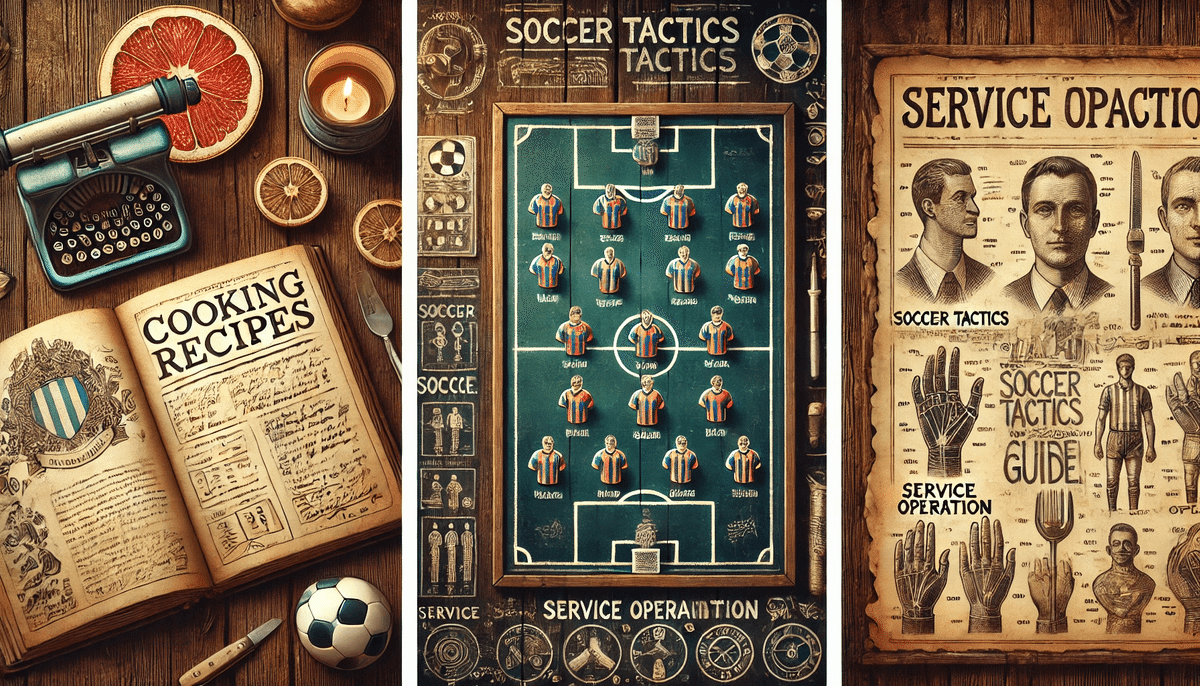
英語で手順を説明するのが地味に難しい件
英語に苦戦するタイミングの一つが、何かの手順を説明する時だ。
例えば、料理のレシピの説明、サッカーの戦術の解説、機械の操作方法など、順を追って物事を伝えるのは結構難しい。

英語で手順を説明しようとすると、繋ぎ言葉(then, and, in addition など)や時制について迷ってしまう時がある。英語の論理構造に慣れていないというのもあるだろう。
共感してくださる方はいるだろうか?共感〜共感〜共感してくださ〜い♪
これを克服するためには、まず考え方を整理し、その後、とある方法を実践すると効果的らしい。
自分の学習のために調べてまとめてみたので、同じ課題感を持っている人の役に立てば幸いです。
① 考え方:手順説明の基本構造
英語で手順を説明する際には、 「順番」や「因果関係」を明確にする」 ことが重要です。
そのため、以下のような論理的な流れを意識すると、自然な説明ができるようになります。
最初のステップ(Introduction)
First, …
To begin with, …
The first step is to …
次のステップ(Sequencing)
Then, …
Next, …
After that, …
Once you have done that, …
追加の説明(Adding Information)
In addition, …
Moreover, …
Besides that, …
Another thing to do is …
結果や目的(Cause & Effect)
As a result, …
Consequently, …
This allows you to …
That way, …
最後のステップ(Conclusion)
Finally, …
The last step is to …
In the end, …
💡 ポイント:この流れを意識しておけば、いざ説明するときに「次に何を言えばいいか」が明確になり、詰まりにくくなります。
② 時制の使い方
手順を説明するときは、現在形 or 命令形 が基本です。
現在形(普遍的な手順)
一般的な手順を説明するときは、現在形 を使います。
First, you heat the water. Then, you pour it into a cup.
これは、レシピやガイドブックなどでよく見られる形ですね。
命令形(指示を与える)
実際に指示をするときは、命令形 を使います。
First, heat the water. Then, pour it into a cup.
この場合、主語(you)は省略され、直接的な指示になります。
現在完了(あるステップが完了した後の動作)
Once you have heated the water, pour it into a cup.
「~したら(完了したら)」という流れを示す場合は、現在完了形を使うとスムーズになります。
③様々な使い分け
手順説明の際、自分の経験や手法などを説明したい時もあると思う。その際のポイントを他のパターンと比較しながらまとめてみる。
自分の経験を説明する場合
→ 「I」& 過去形 (Simple Past) を使う
自分がすでに行ったことを説明するので、基本的に 過去形 で話します。
✅ 例:
"When I made my video, I first gathered all the necessary materials. Then, I wrote a script and planned the shots. After that, I recorded the footage and edited it using Premiere Pro."
ポイント:
動画制作が 過去の出来事 なので、過去形 を使う。
gathered, wrote, planned, recorded, edited などすべて過去形。
指示を伝える場合
→ 「主語省略」 & 命令形 (Imperative) 使う
「○○しなさい」という指示なので、動詞の原形 (base form) を使います。
✅ 例:
"First, gather all the necessary materials. Then, write a script and plan the shots. After that, record the footage and edit it using Premiere Pro."
ポイント:
主語 (You) を省略して、動詞をそのまま使う。
Gather, Write, Plan, Record, Edit → すべて原形。
一般的な手順を説明する場合
→ 「You」& 現在形 (Simple Present) を使う
普遍的な手順(誰がやっても同じ)を説明するときは、現在形 を使うのが自然です。
✅ 例:
"To create a video, you first gather all the necessary materials. Then, you write a script and plan the shots. After that, you record the footage and edit it using Premiere Pro."
ポイント:
いつでも使える一般的な手順なら、現在形 を使う。
Gather, Write, Plan, Record, Edit → 現在形 の動詞の原形を使う。
「You」を主語にすると、より説明っぽくなる。

結論
✅「I」で経験を説明するなら → 過去形
✅ 誰かに手順を伝えるなら → 命令形
✅ 一般的なやり方を説明するなら → 現在形
これを意識すれば、自然な説明ができます!
④良い練習方法
次に、これらの考え方を定着させるための練習方法を紹介します。
1. ルーチンを英語で説明する(セルフトーク)
日常の簡単な作業(コーヒーを淹れる、服をたたむなど)を英語で説明してみましょう。
例えば:
First, I take a coffee filter and put it in the dripper.
Next, I add ground coffee.
Then, I pour hot water slowly in a circular motion.
Finally, I wait for the coffee to drip, and it’s ready to drink.
✅ ポイント:最初は書き出して練習し、その後、口頭でスムーズに言えるようにする。
2. YouTubeや英語のレシピ動画をシャドーイング
料理やDIYの動画を観て、ナレーターの説明をシャドーイングすると、自然なフレーズと時制の使い方 に慣れることができます。
おすすめキーワード:
"how to make a sandwich"
"simple DIY tutorial"
"how to change a tire"
3. 手順を英語で書く(日記やメモ)
毎日のタスクの手順を英語でメモしてみるのも効果的です。
例:「洗濯の手順」
First, separate the clothes by color.
Then, put them in the washing machine.
Next, add detergent.
After that, start the washing cycle.
Once it's done, hang the clothes to dry.
✅ ポイント:短くてOK!定型表現を繰り返し使うことで、自然にフレーズが身につく。
4. AIや英語の先生と会話練習
実際に「手順を説明するロールプレイ」をしてみるのもおすすめです。
例えば:
"Can you explain how to book a flight?"
"Can you tell me how to make a simple pasta dish?"
"How do I set up a new smartphone?"
AIや英会話パートナーと練習することで、実践的なスキルが身につきます。
まとめ
基本構造(First → Next → Then → Finally)を意識すると、スムーズに説明できる
時制は「現在形 or 命令形」が基本、状況によって現在完了も活用。自分の経験の場合は過去形が基本
練習方法として、「セルフトーク」「動画のシャドーイング」「手順を英語で書く」「会話練習」を活用する
💡 まずはシンプルな手順から練習し、徐々に複雑な説明にも挑戦していくと、スムーズに話せるようになります!
ということでざっとまとめてみたのだが、割と自分の学びになった。知っているのとできるのはまた違うので、スムーズに話せるようになりたい。。
なお、自分は手順の解説を学ぶ際に、カクテルの作り方の動画を見たりする。お酒は弱いのだが、お酒の種類やレシピを知るのは好きなのだ。
余談だが、以下の動画のバーテンダーは、シェイクする時に毎回最高のスマイルを見せてくれる。
ちなみに、未成年の読者がいたらごめんなさい。お酒は20歳になってからで。
おまけ
仕事などで手順を英語で説明する際の参考として、営業のロープレを例として載せてみます↓

模擬商談スクリプト:LMSツールの操作方法と導入方法の説明(営業ロールプレイング)
👥 登場人物
Sales Representative (営業担当)
Client (クライアント)
1. 商談の開始(Introduction)
Sales Representative:
"Good morning, and thank you for taking the time to meet with me today. I'm excited to introduce our LMS tool and discuss how it can streamline your company's training and development processes."
(おはようございます。本日はお時間をいただき、ありがとうございます。今日は、弊社のLMSツールをご紹介し、貴社の研修や人材育成プロセスをどのように効率化できるかについてお話しできればと思います。)
Client:
"Thank you. We've been looking for a more efficient way to manage our training programs. Can you give us a brief overview of your LMS?"
(ありがとうございます。私たちは、より効率的に研修プログラムを管理できる方法を探しています。LMSの概要を簡単に教えてもらえますか?)
2. LMSツールの概要説明(Overview of the LMS Tool)
Sales Representative:
"Of course. Our LMS is a cloud-based learning management system designed to help organizations like yours manage employee training efficiently."
(もちろんです。弊社のLMSはクラウドベースの学習管理システムで、貴社のような企業が従業員の研修を効率的に管理できるよう設計されています。)
"It allows you to create, manage, and track training programs easily. You can upload training materials, assign courses to employees, and monitor their progress in real-time."
(このシステムを使えば、研修プログラムの作成、管理、進捗の追跡を簡単に行うことができます。研修資料をアップロードし、従業員にコースを割り当て、リアルタイムで進捗を確認することが可能です。)
"Would you like me to show you a quick demo?"
(簡単なデモをご覧になりますか?)
3. 操作デモ(LMS操作方法の説明)
Client:
"Yes, that would be great."
(はい、それは助かります。)
Sales Representative:
"Great. First, let's log in to the system. Once you have logged in, you'll see the dashboard, which provides an overview of ongoing training programs and user activities."
(では、まずシステムにログインしましょう。ログインすると、ダッシュボードが表示され、進行中の研修プログラムやユーザーの活動状況が一目でわかります。)
"Next, to create a new course, click on the “Create Course” button. Here, you can upload videos, PDFs, quizzes, and other materials."
(次に、新しいコースを作成するには、「Create Course(コース作成)」ボタンをクリックします。ここでは、動画、PDF、クイズ、その他の教材をアップロードできます。)
"After that, you can assign the course to employees by selecting their names from the user list."
(その後、ユーザーリストから従業員の名前を選択し、コースを割り当てることができます。)
"Finally, to track progress, go to the “Reports” section. This allows you to see who has completed the training and who still needs to finish it."
(最後に、進捗を確認するには、「Reports(レポート)」セクションを開きます。これにより、誰が研修を完了し、誰がまだ受講中かを確認できます。)
"Would you like to try navigating through the system yourself?"
(実際にシステムを操作してみますか?)
4. クライアントの懸念点への対応(Handling Client Concerns)
Client:
"It looks user-friendly. However, our employees are not very tech-savvy. How difficult is it to onboard them?"
(使いやすそうですね。ただ、当社の従業員はあまりITに詳しくないのですが、導入は難しくないでしょうか?)
Sales Representative:
"That’s a great question. We offer a step-by-step onboarding process, including video tutorials and a help center."
(良い質問ですね。弊社では、ビデオチュートリアルやヘルプセンターを含む、段階的なオンボーディングプロセスを提供しています。)
"In addition, our support team is available 24/7 to assist with any technical issues."
(さらに、弊社のサポートチームは24時間対応で、技術的な問題が発生した際にサポートいたします。)
"Would you like us to arrange a trial period for a small group of employees? This way, you can test the system before making a final decision."
(まずは少人数の従業員でトライアル期間を設けてみてはいかがでしょうか?実際に使ってみた上で、最終的な判断をすることができます。)
5. 導入プロセスの説明(Implementation Process)
Client:
"That sounds reasonable. What’s the process for getting started?"
(それは良さそうですね。導入するにはどうすればよいですか?)
Sales Representative:
"The implementation process is straightforward:"
First, we set up your company’s account. This takes about one business day.
(まず、貴社のアカウントを設定します。これは1営業日ほどで完了します。)Next, we provide administrator training so that your team can manage the LMS effectively.
(次に、管理者向けのトレーニングを実施し、LMSの運用方法を習得していただきます。)Then, we launch a pilot test with a small group of employees.
(その後、少人数の従業員でパイロットテストを実施します。)Finally, once you’re satisfied, we roll out the system company-wide.
(最終的に、問題がなければ、全社導入を行います。)
"The entire process typically takes about 2 to 4 weeks, depending on your company’s needs."
(全体のプロセスは通常2~4週間程度で完了しますが、貴社の状況に応じて調整可能です。)
6. 商談のクロージング(Closing the Deal)
Client:
"That sounds great. I’d like to discuss this with my team and get back to you next week."
(良さそうですね。チームと相談して、来週ご連絡します。)
Sales Representative:
"That sounds like a plan. I’ll follow up with you early next week to answer any further questions."
(承知しました。来週の初めにフォローアップさせていただきますので、ご不明点があれば遠慮なくお知らせください。)
"Thank you for your time today. I look forward to working with you."
(本日はありがとうございました。ご一緒にお仕事ができることを楽しみにしています。)
💡 ポイント
✔ 順序を明確にする表現(First, Next, Then, Finally)を使う
✔ 時制のバランス(現在形・現在完了形・命令形・過去形)を意識する

※記事内の画像は全て生成AIで生成しています
いいなと思ったら応援しよう!

